"Cherishing Little Steps - A Haven for Baby and Family Journeys"
Car Seat Selection Guide
Are you feeling overwhelmed by the vast selection of car seats out there? Don’t worry, we’ve got you covered!
Our Car Seat Selection Guide is here to help you find the perfect car seat for your little one, making sure they stay safe and secure during every ride.
We understand that choosing the right car seat can be a daunting task, but rest assured, we’ve done all the research for you. From the importance of car seat safety to age and weight guidelines, we’ve got all the information you need to make an informed decision.
So, let’s dive in and find the best car seat that fits your needs and gives you peace of mind.
Key Takeaways
- Read the car seat manual and follow proper installation techniques
- Consider age and weight guidelines when selecting a car seat
- Rear-facing seats provide optimal protection for infants and toddlers
- Use the LATCH system or seatbelt for proper car seat installation
Importance of Car Seat Safety
You need to prioritize car seat safety when selecting a car seat for your child. Ensuring your child’s safety while traveling is of utmost importance. Proper car seat installation is essential to provide maximum protection in the event of a collision. Here are some car seat installation tips to help you secure your child’s seat correctly:
-
Read the car seat manual: Familiarize yourself with the installation instructions provided by the manufacturer. Each car seat may have specific guidelines that need to be followed.
-
Use the right installation method: Depending on your child’s age and weight, you may need to choose between rear-facing, forward-facing, or booster seats. Follow the recommended installation method for your child’s age and size.
-
Achieve a secure fit: Make sure the car seat is tightly secured to the vehicle’s seat. You shouldn’t be able to move the seat more than an inch in any direction.
Now let’s talk about the benefits of extended rear-facing. Research shows that rear-facing car seats provide the best protection for young children. It reduces the risk of head and neck injuries in the event of a crash. Extended rear-facing allows your child’s body to be better supported, minimizing the impact forces on their vulnerable neck and spine.
Prioritizing car seat safety is crucial for your child’s well-being. By following proper installation techniques and considering the benefits of extended rear-facing, you can ensure that your child travels safely in the car.
Age and Weight Guidelines
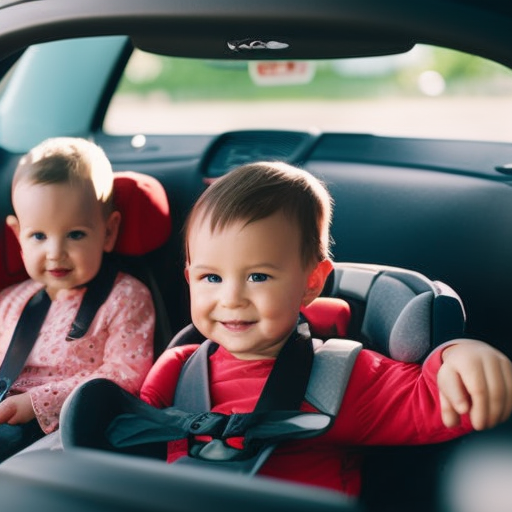
Parents must consider age and weight guidelines when selecting a car seat for their child. These guidelines are crucial in ensuring that the car seat provides the necessary protection and safety for your little one.
Age guidelines are typically provided by car seat manufacturers and are based on the developmental milestones and physical capabilities of children at different ages. It’s important to follow these age guidelines to ensure that the car seat is appropriate for your child’s stage of development.
Weight guidelines, on the other hand, are based on the maximum weight capacity of the car seat. It’s essential to adhere to the weight limits specified by the manufacturer as exceeding these limits can compromise the effectiveness of the car seat in the event of a crash.
Rear-Facing Vs. Forward-Facing Seats

Considering the safety of your child, it is important to understand the distinction between rear-facing and forward-facing seats. Rear-facing safety is crucial for infants and toddlers, as it provides optimal protection for their fragile bodies. In a rear-facing seat, the impact of a crash is distributed evenly across the child’s back, neck, and head, reducing the risk of severe injury. It also supports their underdeveloped neck muscles and protects their spinal cord. On the other hand, forward-facing seats offer certain benefits for older children. They allow them to interact with the surroundings, increasing their engagement during car rides. Additionally, forward-facing seats provide a better view of the road, promoting a sense of independence and reducing motion sickness. However, it is essential to note that the transition from rear-facing to forward-facing should be delayed as long as possible, following the weight and height guidelines recommended by car seat manufacturers. Ensuring the proper use of car seats and understanding the advantages of each orientation is crucial for your child’s safety and well-being.
| Rear-Facing Safety | Forward-Facing Benefits |
|---|---|
| Even impact distribution | Increased engagement |
| Supports underdeveloped neck muscles | Sense of independence |
| Protects spinal cord | Reduced motion sickness |
Types of Car Seats: Infant, Convertible, and Booster
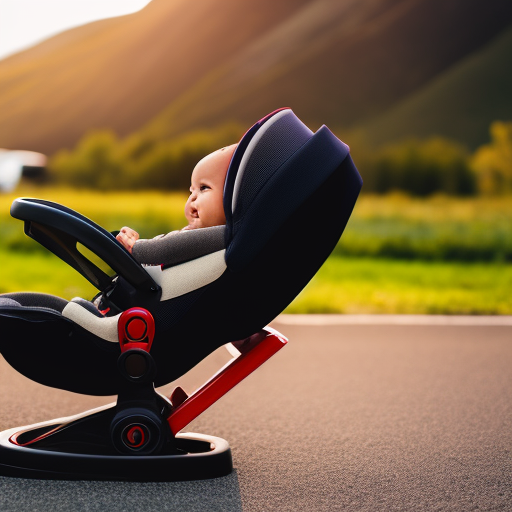
When choosing a car seat, it’s important to understand the different types: infant, convertible, and booster.
Infant car seats are designed for newborns and young babies. They’re rear-facing and provide crucial support for a baby’s head, neck, and spine. These seats typically have a detachable base that stays in the car, making car seat installation quick and easy.
Convertible car seats can be used in both rear-facing and forward-facing positions, allowing them to grow with your child. They’ve higher weight and height limits than infant car seats, so they can accommodate older babies and toddlers. Extended rear facing is recommended for as long as possible, as it provides the best protection for your child’s head, neck, and spine in the event of a crash.
Booster seats are used for older children who’ve outgrown their convertible seats. They raise the child up so that the seat belt fits properly across their lap and shoulder. It’s important to follow the manufacturer’s guidelines for height and weight limits when transitioning between car seat types.
Remember to always read the car seat manual thoroughly for proper car seat installation and usage instructions.
LATCH System and Seatbelt Installation
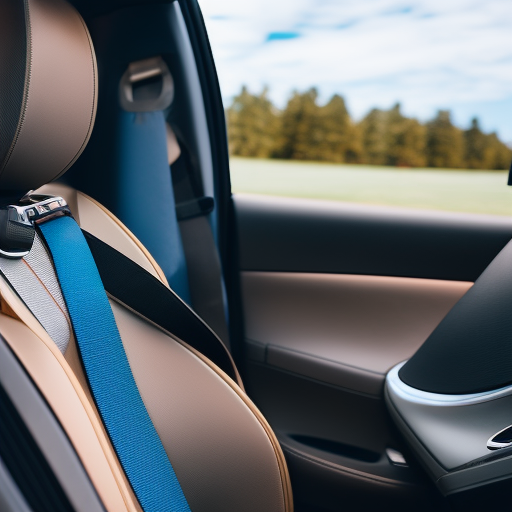
To properly install a car seat, you can use either the LATCH system or the seatbelt. Both methods have their benefits, and it’s important to understand how to properly use them to ensure the safety of your child.
The LATCH system, which stands for Lower Anchors and Tethers for Children, is a set of standardized anchors and connectors that make installing a car seat easier and more secure. One of the main benefits of using the LATCH system is that it eliminates the need to use a seatbelt to secure the car seat. It also provides a more secure and stable installation, reducing the risk of the car seat shifting or becoming loose during a collision. However, it’s important to note that the LATCH system has weight limits, and once your child exceeds these limits, you’ll need to switch to using the seatbelt to secure the car seat.
On the other hand, seatbelt installation is another option for securing your car seat. It’s important to follow these seatbelt installation tips to ensure a proper installation:
- Make sure the seatbelt is locked and pulled tightly to remove any slack.
- Check that the car seat is securely held in place and doesn’t move more than an inch in any direction.
- Position the car seat in the back seat, preferably in the center, away from airbags.
- Double-check the car seat’s manual for any specific installation instructions.
Whether you choose to use the LATCH system or the seatbelt, it’s crucial to carefully read the car seat’s manual and follow the manufacturer’s instructions for a safe and secure installation. Remember, the goal is to provide the best protection for your child during car rides.
Safety Standards and Certifications

You should look for a car seat that meets safety standards and certifications. Ensuring that your child is protected while on the road is of utmost importance.
Here are some key points to consider when evaluating the safety ratings and testing procedures of car seats:
-
Look for car seats that have been tested and certified by reputable organizations such as the National Highway Traffic Safety Administration (NHTSA) or the Juvenile Products Manufacturers Association (JPMA).
-
Check for safety ratings given by independent organizations like Consumer Reports or the Insurance Institute for Highway Safety (IIHS). These ratings provide valuable insights into the crash protection and ease of use of different car seat models.
-
Familiarize yourself with the testing procedures that car seats undergo. This includes rigorous crash tests, evaluations of structural integrity, and assessments of ease of use. Understanding these procedures will help you make an informed decision when selecting a car seat for your child.
Comfort and Convenience Features
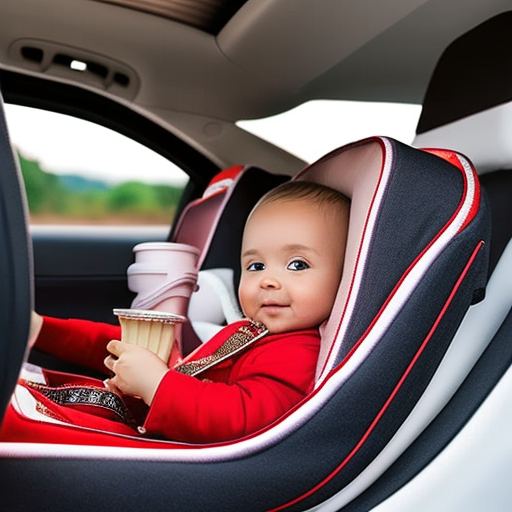
Look for car seats that offer a range of comfort and convenience features to enhance your child’s travel experience. When it comes to comfort features, look for seats with plush padding and cushioning to keep your child cozy during long rides. Adjustable headrests and harness heights are also important to ensure a comfortable fit as your child grows. Some car seats even come with features like memory foam or breathable fabrics to provide extra comfort and support.
Convenience features are equally important. Look for car seats with easy installation systems, such as latch connectors or seat belt guides, to make the installation process quick and hassle-free. Adjustable recline positions are also convenient, allowing you to find the perfect angle for your child’s comfort and safety. Additionally, car seats with removable and machine-washable covers make cleaning a breeze.
Other convenience features to consider include built-in cup holders, storage pockets, and adjustable harnesses that can be easily adjusted as your child grows. These features can make your child’s travel experience more enjoyable and convenient for both of you.
Durability and Longevity of Car Seats
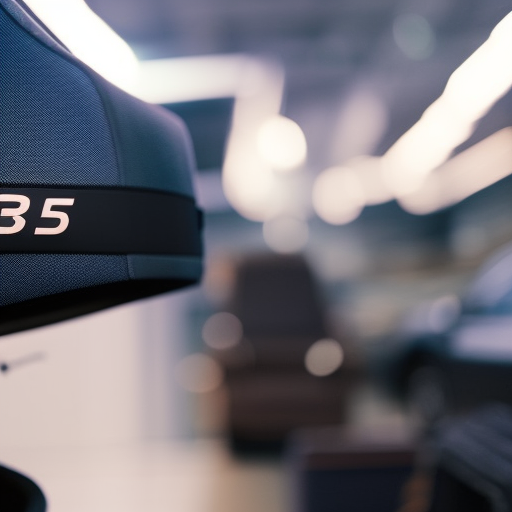
When considering car seat options, it’s important to prioritize the durability and longevity of the seat. You want a car seat that will last for years and withstand the wear and tear of daily use. To help you make an informed decision, here are some key points to consider:
-
Durability testing: Look for car seats that have undergone rigorous durability testing. This ensures that the seat is built to withstand impact and maintain its structural integrity over time. It gives you peace of mind knowing that your child will be safe and protected.
-
Car seat expiration: Car seats have an expiration date, typically around six to ten years from the date of manufacture. It’s crucial to check the expiration date before purchasing a car seat, as an expired seat may not provide the same level of safety. Be sure to keep track of the expiration date and replace the seat accordingly.
-
Quality materials: Consider car seats made from high-quality materials that are known for their durability. Look for seats with reinforced frames, strong harness systems, and easy-to-clean fabrics. These features contribute to the longevity of the seat and ensure that it will stand the test of time.
Prioritizing durability and longevity when selecting a car seat is essential for your child’s safety and your peace of mind. By choosing a car seat that has undergone durability testing, checking the expiration date, and considering the quality of materials, you can ensure that your investment will last for years to come.
Ease of Cleaning and Maintenance
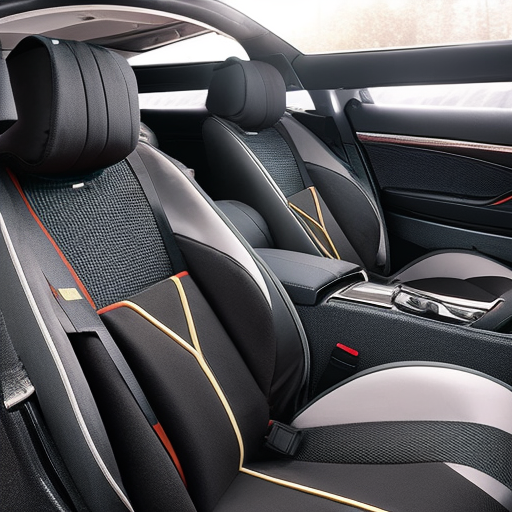
Consider the cleaning and maintenance requirements of the car seat to ensure its longevity and ease of use. When selecting a car seat, it’s important to choose one that’s easy to clean and maintain. Life with a child can be messy, and spills and accidents are bound to happen. Look for car seats with removable and machine-washable covers. This will make cleaning a breeze and help keep the car seat looking fresh and new.
Additionally, consider the ease of maintenance in terms of installation and adjustment. Look for car seats that have clear instructions and are user-friendly. Some car seats have features like easy-to-adjust harnesses or built-in cup holders that make daily maintenance a breeze.
Regular maintenance is essential to ensuring the safety and performance of the car seat. By choosing a car seat that’s easy to clean and maintain, you can save time and effort while keeping your child safe and comfortable during car rides.
Considerations for Multiple Vehicles

To ensure convenience and adaptability, it’s important to account for the need of using a car seat in multiple vehicles. When considering the compatibility of a car seat with multiple vehicles, there are several factors to keep in mind.
Here are some key considerations for switching between vehicles:
-
Ease of installation: Look for a car seat that’s easy to install in different vehicles. A seat with a simple latch system or clear installation instructions can save you time and frustration when moving the seat between cars.
-
Adjustability: Opt for a car seat that offers adjustable features to accommodate different vehicles. Look for seats with multiple recline positions, adjustable harness heights, and adaptable base options for a secure fit in various vehicles.
-
Portability: Consider the weight and size of the car seat, especially if you frequently switch between vehicles. A lightweight and compact seat can make it easier to transport and install in different cars without sacrificing safety.
Extended Rear-Facing: Benefits and Recommendations
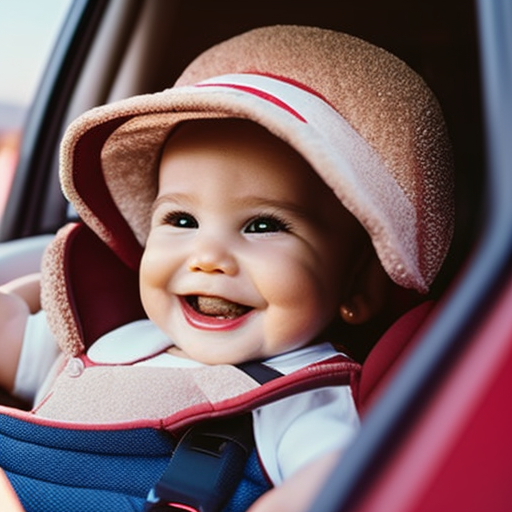
If you frequently switch between vehicles and want to ensure the safety and comfort of your child, it’s important to understand the benefits and recommendations of extended rear-facing car seats.
Extended rear-facing means keeping your child in a rear-facing position for a longer period of time, typically until they reach the maximum weight or height limit specified by the car seat manufacturer. This practice has gained popularity due to its numerous benefits.
One of the main benefits of extended rear-facing is increased protection for your child’s head, neck, and spine. In a frontal crash, the force is distributed more evenly across the entire body when the child is facing the rear. This reduces the risk of serious injuries, especially to the vulnerable neck area.
Another benefit is the decreased risk of ejection. When children are facing forward, the force of a crash can propel them out of their seat. Extended rear-facing greatly reduces this risk, as the seat and harness system provide better support and containment.
Additionally, extended rear-facing allows for better legroom and comfort for your child. Contrary to popular belief, children are flexible and can comfortably sit with their legs crossed, folded, or bent. The rear-facing position also provides a cozy and secure environment, allowing your child to rest or sleep during car rides.
To ensure the safety of your child, it’s recommended to follow these guidelines for extended rear-facing:
- Use a car seat that allows for extended rear-facing, with high weight and height limits.
- Keep your child rear-facing until they reach the maximum limits of the car seat.
- Ensure a snug and proper harness fit, with the straps at or below shoulder level.
- Regularly check the car seat’s installation and adjust as needed.
- Follow the car seat manufacturer’s instructions for proper use and maintenance.
Tips for Proper Car Seat Installation
To ensure the safety and effectiveness of your child’s car seat, it’s vital that you properly install the seat in your vehicle. Here are some tips to help you with the installation process:
-
Read the car seat installation manual: Familiarize yourself with the specific guidelines provided by the manufacturer. Each car seat has its own installation requirements, so it’s important to follow them closely.
-
Use the seat belt or LATCH system: Make sure you understand which method is recommended for your car seat and use it correctly. The LATCH system can provide a secure installation, but be aware of weight limits and expiration dates.
-
Check for a tight fit: After securing the car seat, give it a firm tug at the base and near the top to ensure it doesn’t move more than an inch in any direction. A snug fit is crucial for optimal protection.
Common installation mistakes to avoid include:
- Twisted or loose straps
- Incorrect harness height or angle
- Improper recline angle
Frequently Asked Questions
What Are the Benefits of Extended Rear-Facing and What Are the Recommendations for How Long a Child Should Be Rear-Facing?
You should keep your child rear-facing for as long as possible. Extended rear-facing has many benefits, such as providing better protection for their head, neck, and spine. Experts recommend keeping them rear-facing until at least the age of 2.
Can You Provide Some Tips for Proper Car Seat Installation to Ensure Maximum Safety?
To ensure maximum safety for your little one, let’s talk car seat installation tips. Proper installation is crucial. One wrong move could be catastrophic. So, buckle up and let’s dive into the details.
Are There Any Comfort and Convenience Features That Can Be Found in Car Seats?
Comfort and convenience features are essential in car seats. They provide a cozy and enjoyable experience for you and your little one. Look for features like plush padding, adjustable headrests, cup holders, and easy installation mechanisms.
How Durable Are Car Seats and How Long Can They Be Used Before Needing to Be Replaced?
Car seats have a limited lifespan due to safety standards. It’s important to follow the manufacturer’s guidelines for replacement, typically around 6-10 years. Regular use, accidents, and wear and tear can also affect their durability.
What Are the Considerations for Families With Multiple Vehicles in Terms of Car Seat Installation and Usage?
When it comes to installing and using car seats in multiple vehicles, you need to consider car seat compatibility and car seat safety ratings. These factors ensure that your child stays safe no matter which vehicle they’re in.
Conclusion
In conclusion, choosing the right car seat is crucial for the safety of your child. By following age and weight guidelines, selecting the appropriate type of seat, and ensuring proper installation, you can help protect your little one during car rides.
Consider the LATCH system or seatbelt installation for added security, and don’t forget to prioritize ease of cleaning and maintenance.
Remember, extended rear-facing offers many benefits, so keep your child facing backwards for as long as possible.
Stay informed and keep your child safe on the road.


